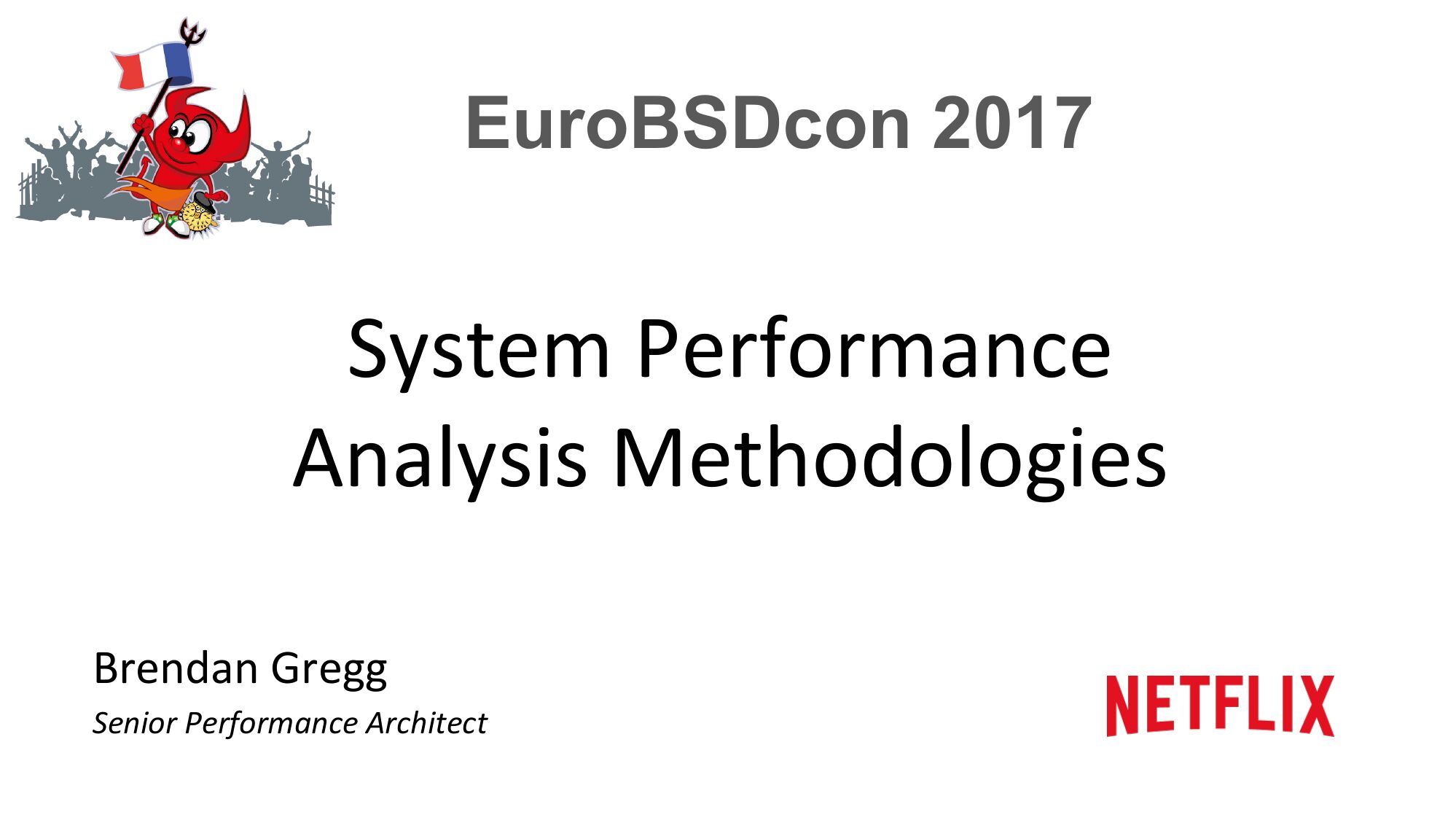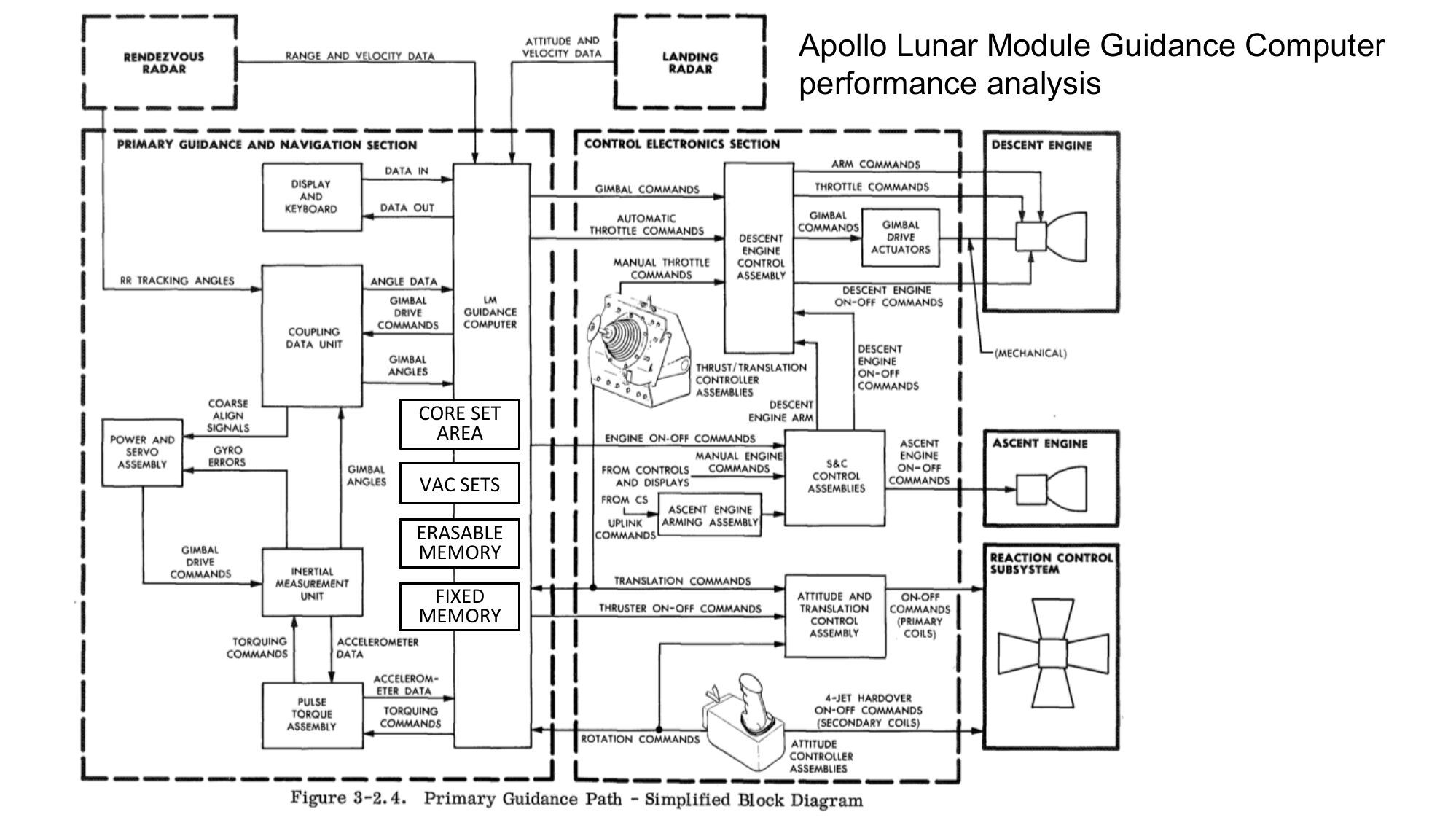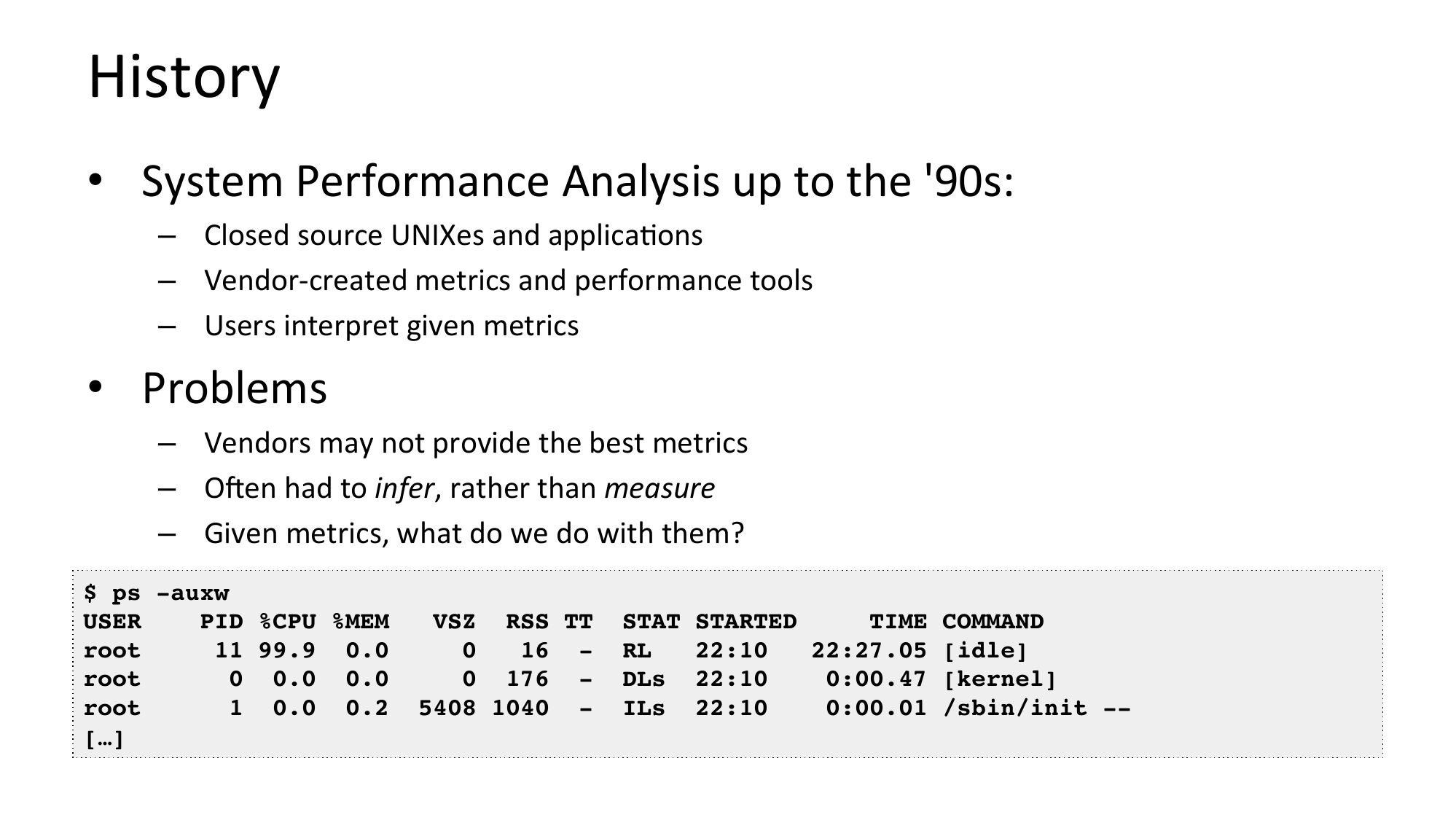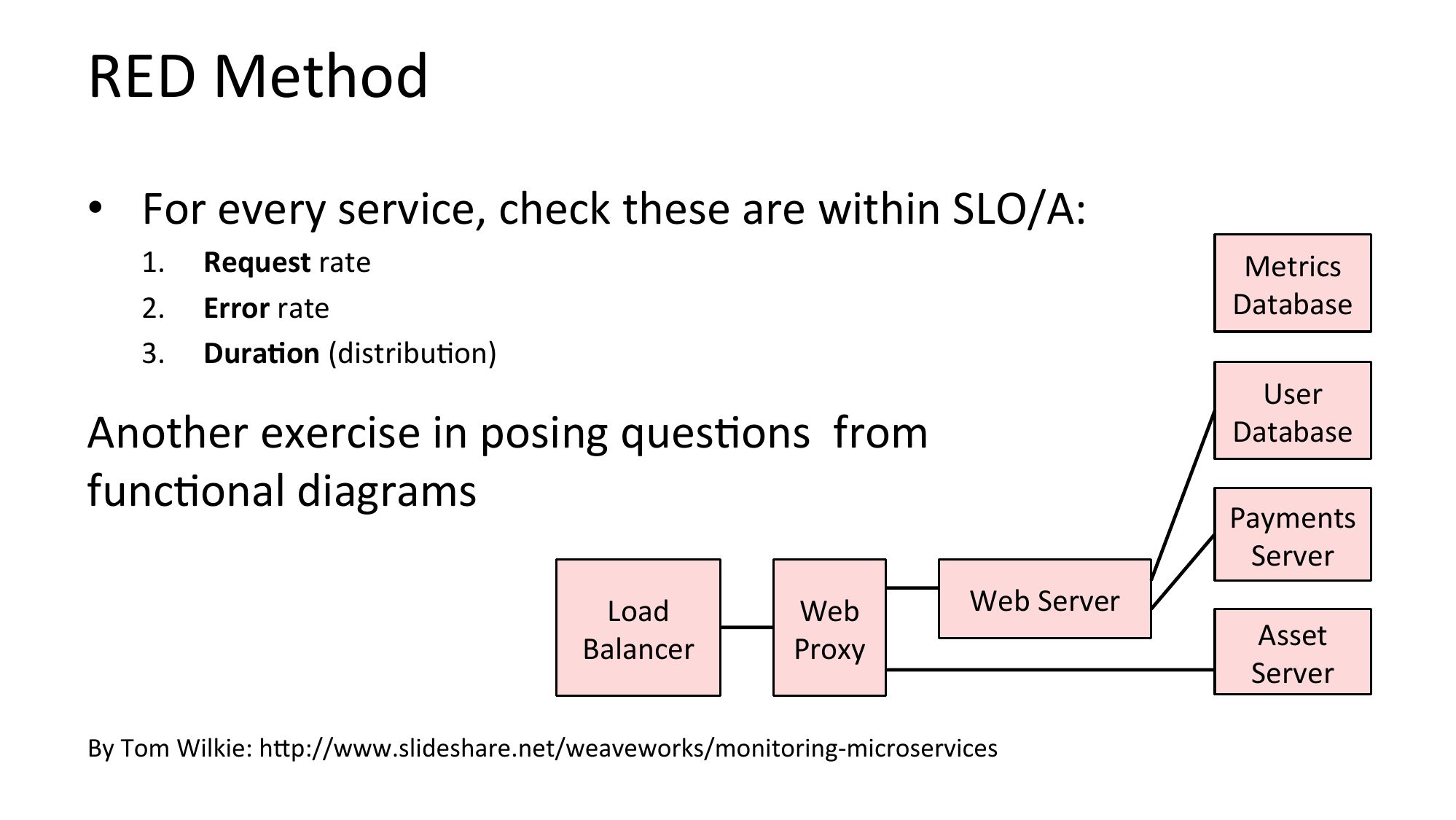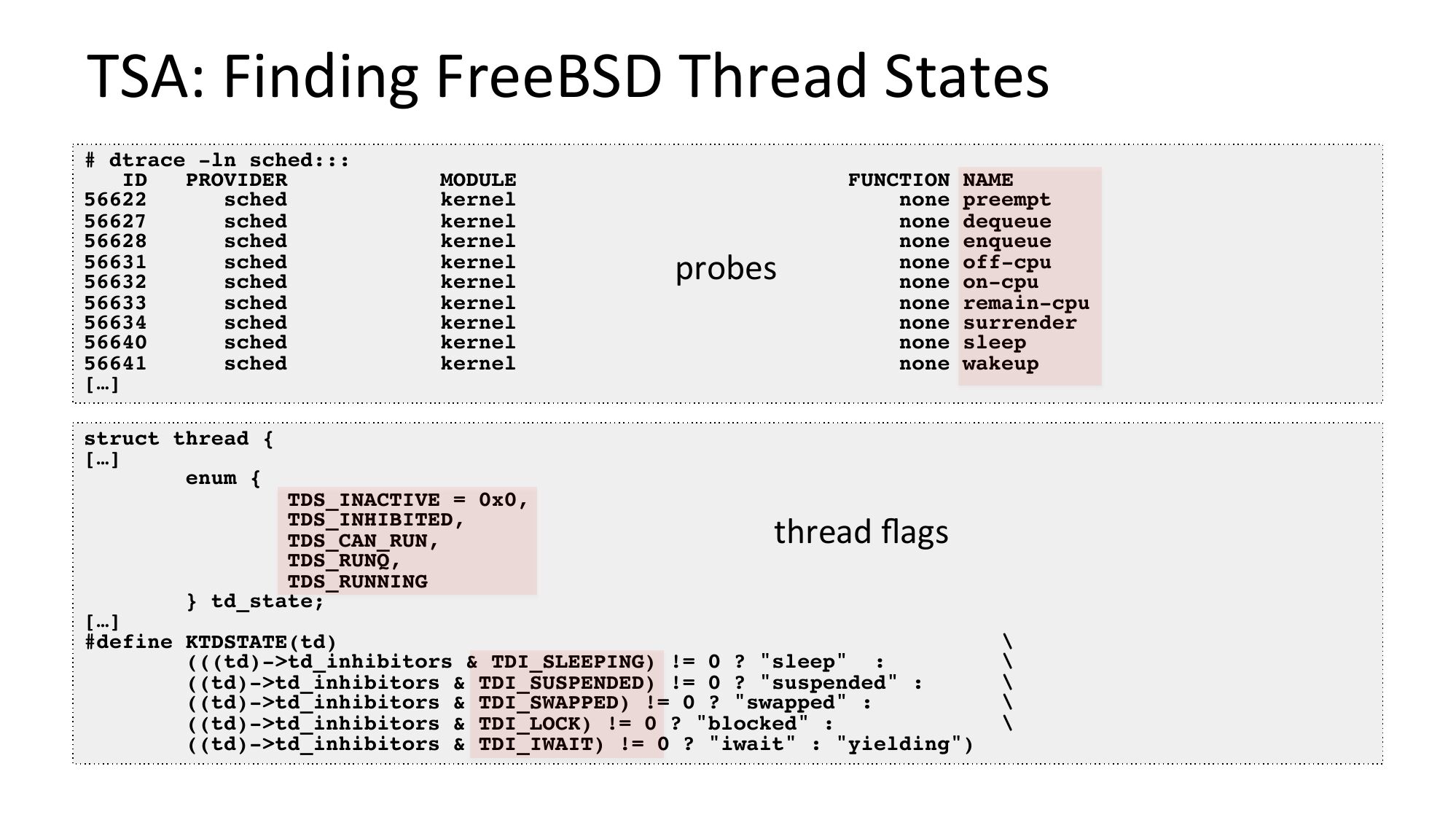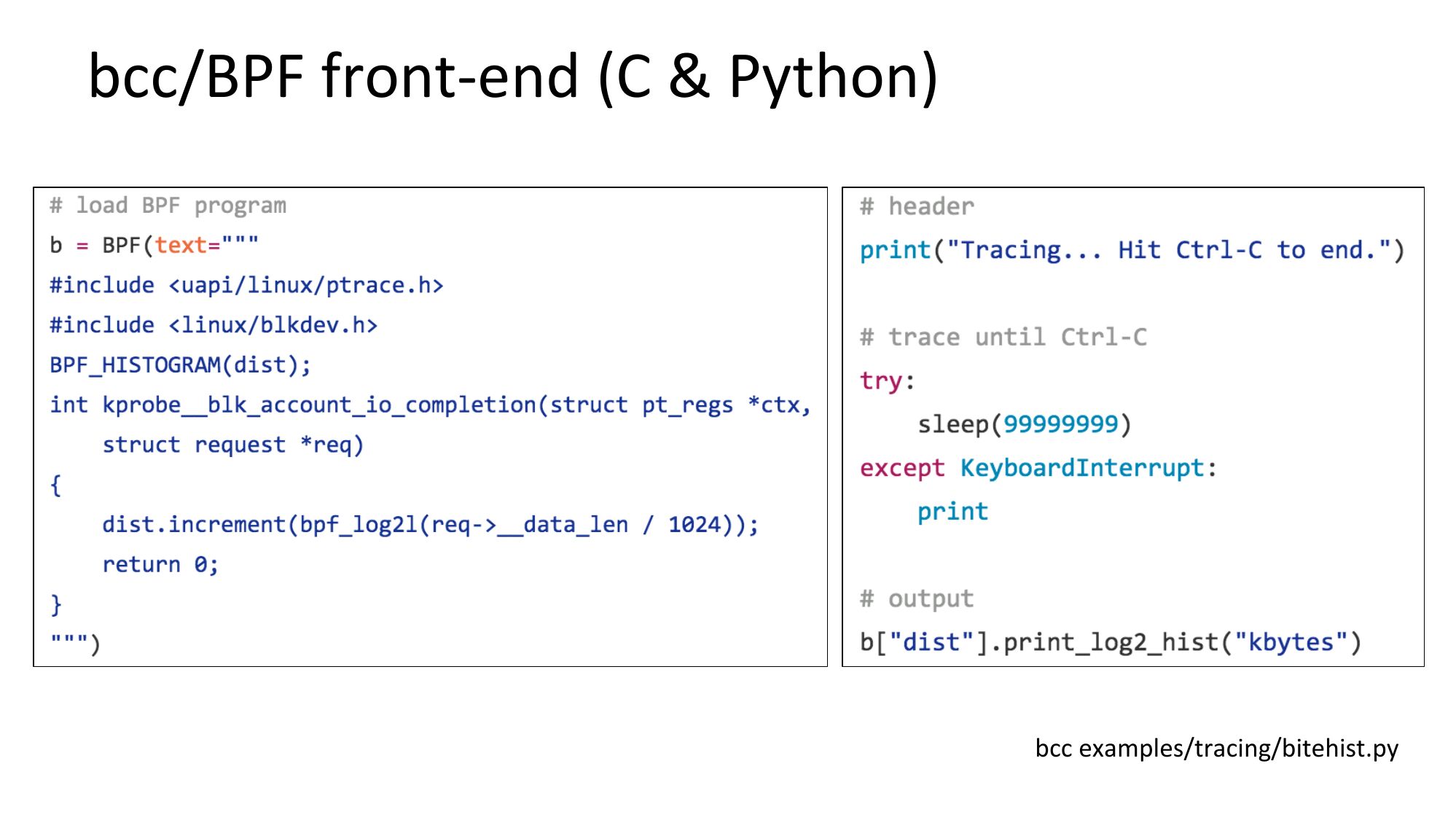EuroBSDcon 2017: System Performance Analysis Methodologies
Video: https://www.youtube.com/watch?v=ay41Uq1DrvMKeynote by Brendan Gregg.
Description: "Traditional performance monitoring makes do with vendor-supplied metrics, often involving interpretation and inference, and with numerous blind spots. Much in the field of systems performance is still living in the past: documentation, procedures, and analysis GUIs built upon the same old metrics. Modern BSD has advanced tracers and PMC tools, providing virtually endless metrics to aid performance analysis. It's time we really used them, but the problem becomes which metrics to use, and how to navigate them quickly to locate the root cause of problems.
There's a new way to approach performance analysis that can guide you through the metrics. Instead of starting with traditional metrics and figuring out their use, you start with the questions you want answered then look for metrics to answer them. Methodologies can provide these questions, as well as a starting point for analysis and guidance for locating the root cause. They also pose questions that the existing metrics may not yet answer, which may be critical in solving the toughest problems. System methodologies include the USE method, workload characterization, drill-down analysis, off-CPU analysis, chain graphs, and more.
This talk will discuss various system performance issues, and the methodologies, tools, and processes used to solve them. Many methodologies will be discussed, from the production proven to the cutting edge, along with recommendations for their implementation on BSD systems. In general, you will learn to think differently about analyzing your systems, and make better use of the modern tools that BSD provides."
| next prev 1/65 | |
| next prev 2/65 | |
| next prev 3/65 | |
| next prev 4/65 | |
| next prev 5/65 | |
| next prev 6/65 | |
| next prev 7/65 | |
| next prev 8/65 | |
| next prev 9/65 | |
| next prev 10/65 | |
| next prev 11/65 | |
| next prev 12/65 | |
| next prev 13/65 | |
| next prev 14/65 | |
| next prev 15/65 | |
| next prev 16/65 | |
| next prev 17/65 | |
| next prev 18/65 | |
| next prev 19/65 | |
| next prev 20/65 | |
| next prev 21/65 | |
| next prev 22/65 | |
| next prev 23/65 | |
| next prev 24/65 | |
| next prev 25/65 | |
| next prev 26/65 | |
| next prev 27/65 | |
| next prev 28/65 | |
| next prev 29/65 | |
| next prev 30/65 | |
| next prev 31/65 | |
| next prev 32/65 | |
| next prev 33/65 | |
| next prev 34/65 | |
| next prev 35/65 | |
| next prev 36/65 | |
| next prev 37/65 | |
| next prev 38/65 | |
| next prev 39/65 | |
| next prev 40/65 | |
| next prev 41/65 | |
| next prev 42/65 | |
| next prev 43/65 | |
| next prev 44/65 | |
| next prev 45/65 | |
| next prev 46/65 | |
| next prev 47/65 | |
| next prev 48/65 | |
| next prev 49/65 | |
| next prev 50/65 | |
| next prev 51/65 | |
| next prev 52/65 | |
| next prev 53/65 | |
| next prev 54/65 | |
| next prev 55/65 | |
| next prev 56/65 | |
| next prev 57/65 | |
| next prev 58/65 | |
| next prev 59/65 | |
| next prev 60/65 | |
| next prev 61/65 | |
| next prev 62/65 | |
| next prev 63/65 | |
| next prev 64/65 | |
| next prev 65/65 |
PDF: EuroBSDcon2017_SystemMethodology.pdf
Keywords (from pdftotext):
slide 1:
EuroBSDcon 2017 System Performance Analysis Methodologies Brendan Gregg Senior Performance Architectslide 2:
slide 3:
Apollo Lunar Module Guidance Computer performance analysis CORE SET AREA VAC SETS ERASABLE MEMORY FIXED MEMORYslide 4:
slide 5:
Backgroundslide 6:
History • System Performance Analysis up to the '90s: – Closed source UNIXes and applicaNons – Vendor-created metrics and performance tools – Users interpret given metrics • Problems – Vendors may not provide the best metrics – ORen had to infer, rather than measure – Given metrics, what do we do with them? $ ps -auxw USER PID %CPU %MEM root 11 99.9 0.0 root 0 0.0 0.0 root 1 0.0 0.2 […] VSZ RSS TT 16 0 176 5408 1040 - STAT STARTED TIME COMMAND 22:10 22:27.05 [idle] DLs 22:10 0:00.47 [kernel] ILs 22:10 0:00.01 /sbin/init --slide 7:
Today 1. Open source OperaNng systems: Linux, BSD, etc. ApplicaNons: source online (Github) 2. Custom metrics Can patch the open source, or, Use dynamic tracing (open source helps) 3. Methodologies Start with the quesNons, then make metrics to answer them Methodologies can pose the quesNons Biggest problem with dynamic tracing has been what to do with it. Methodologies guide your usage.slide 8:
Crystal Ball Thinkingslide 9:
An2-Methodologiesslide 10:
Street Light An2-Method 1. Pick observability tools that are – Familiar – Found on the Internet – Found at random 2. Run tools 3. Look for obvious issuesslide 11:
Drunk Man An2-Method • Drink Tune things at random unNl the problem goes awayslide 12:
Blame Someone Else An2-Method 1. Find a system or environment component you are not responsible for 2. Hypothesize that the issue is with that component 3. Redirect the issue to the responsible team 4. When proven wrong, go to 1slide 13:
Traffic Light An2-Method 1. Turn all metrics into traffic lights 2. Open dashboard 3. Everything green? No worries, mate. • Type I errors: red instead of green – team wastes Nme • Type II errors: green instead of red – performance issues undiagnosed – team wastes more Nme looking elsewhere Traffic lights are suitable for objec2ve metrics (eg, errors), not subjec2ve metrics (eg, IOPS, latency).slide 14:
Methodologiesslide 15:
Performance Methodologies • For system engineers: System Methodologies: – ways to analyze unfamiliar systems and applicaNons • For app developers: – guidance for metric and dashboard design Collect your own toolbox of methodologies Problem statement method FuncNonal diagram method Workload analysis Workload characterizaNon Resource analysis USE method Thread State Analysis On-CPU analysis CPU flame graph analysis Off-CPU analysis Latency correlaNons Checklists StaNc performance tuning Tools-based methodsslide 16:
Problem Statement Method 1. What makes you think there is a performance problem? 2. Has this system ever performed well? 3. What has changed recently? soRware? hardware? load? 4. Can the problem be described in terms of latency? or run Nme. not IOPS or throughput. 5. Does the problem affect other people or apps? 6. What is the environment? soRware, hardware, instance types? versions? config?slide 17:
FuncNonal Diagram Method 1. Draw the funcNonal diagram 2. Trace all components in the data path 3. For each component, check performance Breaks up a bigger problem into smaller, relevant parts Eg, imagine throughput between the UCSB 360 and the UTAH PDP10 was slow… ARPA Network 1969slide 18:
Workload Analysis • Begin with applicaNon metrics & context • A drill-down methodology • Pros: – ProporNonal, accurate metrics – App context Workload ApplicaNon System Libraries • Cons: System Calls – Difficult to dig from app to resource – App specific Kernel Hardware Analysisslide 19:
Workload CharacterizaNon • Check the workload, not resulNng performance Workload • Eg, for CPUs: Who: which PIDs, programs, users Why: code paths, context What: CPU instrucNons, cycles How: changing over Nme Targetslide 20:
Workload CharacterizaNon: CPUs Who Why top CPU profile CPU flame graphs How What monitoring PMCs CPI flame graphslide 21:
Most companies and monitoring products today Who Why top CPU profile CPU flame graphs How What monitoring PMCs CPI flame graph We can do bejerslide 22:
Resource Analysis • Typical approach for system performance analysis: begin with system tools & metrics Workload • Pros: – Generic – Aids resource perf tuning ApplicaNon • Cons: System Libraries – Uneven coverage – False posiNves System Calls Kernel Hardware Analysisslide 23:
The USE Method • For every resource, check: Utilization: busy time Saturation: queue length or time Errors: easy to interpret (objective) Starts with the questions, then finds the tools Eg, for hardware, check every resource incl. busses:slide 24:
http://www.brendangregg.com/USEmethod/use-rosetta.htmlslide 25:
http://www.brendangregg.com/USEmethod/use-freebsd.htmlslide 26:
slide 27:
Apollo Lunar Module Guidance Computer performance analysis CORE SET AREA VAC SETS ERASABLE MEMORY FIXED MEMORYslide 28:
USE Method: SoRware • USE method can also work for soRware resources – kernel or app internals, cloud environments – small scale (eg, locks) to large scale (apps). Eg: • Mutex locks: – uNlizaNon à lock hold Nme – saturaNon à lock contenNon – errors à any errors • EnNre applicaNon: – uNlizaNon à percentage of worker threads busy – saturaNon à length of queued work – errors à request errors Resource UNlizaNon (%)slide 29:
RED Method • For every service, check these are within SLO/A: Request rate Error rate Dura=on (distribuNon) Metrics Database User Database Another exercise in posing quesNons from funcNonal diagrams Load Balancer Web Proxy Payments Server Web Server By Tom Wilkie: hjp://www.slideshare.net/weaveworks/monitoring-microservices Asset Serverslide 30:
Thread State Analysis State transiNon diagram IdenNfy & quanNfy Nme in states Narrows further analysis to state Thread states are applicable to all appsslide 31:
TSA: eg, OS X Instruments: Thread Statesslide 32:
TSA: eg, RSTS/E RSTS: DEC OS from the 1970's TENEX (1969-72) also had Control-T for job statesslide 33:
TSA: Finding FreeBSD Thread States
# dtrace -ln sched:::
PROVIDER
sched
sched
sched
sched
sched
sched
sched
sched
sched
[…]
MODULE
kernel
kernel
kernel
kernel
kernel
kernel
kernel
kernel
kernel
probes
FUNCTION NAME
none preempt
none dequeue
none enqueue
none off-cpu
none on-cpu
none remain-cpu
none surrender
none sleep
none wakeup
struct thread {
[…]
enum {
TDS_INACTIVE = 0x0,
TDS_INHIBITED,
TDS_CAN_RUN,
TDS_RUNQ,
TDS_RUNNING
} td_state;
thread flags
[…]
#define KTDSTATE(td)
(((td)->gt;td_inhibitors & TDI_SLEEPING) != 0 ? "sleep" :
((td)->gt;td_inhibitors & TDI_SUSPENDED) != 0 ? "suspended" :
((td)->gt;td_inhibitors & TDI_SWAPPED) != 0 ? "swapped" :
((td)->gt;td_inhibitors & TDI_LOCK) != 0 ? "blocked" :
((td)->gt;td_inhibitors & TDI_IWAIT) != 0 ? "iwait" : "yielding")
slide 34:TSA: FreeBSD # ./tstates.d Tracing scheduler events... Ctrl-C to end. Time (ms) per state: COMM PID CPU RUNQ SLP irq14: ata0 irq15: ata1 swi4: clock (0) 12 usbus0 [...] sshd 0 10011 devd dtrace 4 10006 rand_harvestq kernel sshd intr cksum cksum cksum idle DTrace proof of concept SUS SWP LCK IWT YLD hjps://github.com/brendangregg/DTrace-tools/blob/master/sched/tstates.dslide 35:
On-CPU Analysis 1. Split into user/kernel states – /proc, vmstat(1) 2. Check CPU balance – mpstat(1), CPU uNlizaNon heat map 3. Profile soRware – User & kernel stack sampling (as a CPU flame graph) 4. Profile cycles, caches, busses – PMCs, CPI flame graph CPU UNlizaNon Heat Mapslide 36:
CPU Flame Graph Analysis 1. Take a CPU profile 2. Render it as a flame graph 3. Study largest "towers" first Discovers issues by their CPU usage Directly: CPU consumers Indirectly: iniNalizaNon of I/O, locks, Nmes, ... Narrows target of study Flame Graphslide 37:
CPU Flame Graphs: FreeBSD
• Use either DTrace or pmcstat. Eg, kernel CPU with DTrace:
git clone https://github.com/brendangregg/FlameGraph; cd FlameGraph
dtrace -n 'profile-99 /arg0/ { @[stack()] = count(); } tick-30s { exit(0); }' >gt; stacks01
stackcollapse.pl gt; stacks01.svg
• Both user & kernel CPU:
dtrace -x ustackframes=100 -x stackframes=100 -n '
profile-99 { @[stack(), ustack(), execname] = sum(1); }
tick-30s,END { printa("%k-%k%s\n%@d\n", @); trunc(@); exit(0); }' >gt; stacks02
hjp://www.brendangregg.com/FlameGraphs/cpuflamegraphs.html#DTrace
slide 38:Java Mixed-Mode CPU Flame Graph Kernel (C) User (C) By sampling stack traces with: • -XX:+PreserveFramePointer • Java perf-map-agent Java JVM (C++)slide 39:
CPI Flame Graph: BSD hjp://www.brendangregg.com/blog/2014-10-31/cpi-flame-graphs.html A CPU flame graph (cycles) colored using instructions/stall profile data eg, using FreeBSD pmcstat: red == instrucNons blue == stallsslide 40:
Off-CPU Analysis Analyze off-CPU Nme via blocking code path: Off-CPU flame graph ORen need wakeup code paths as well…slide 41:
Off-CPU Time Flame Graph: FreeBSD tar … >gt; /dev/null seek readahead file read file read readahead directory read missing symbols (stripped) Off-CPU Nme Stack depthslide 42:
Off-CPU Profiling: FreeBSD
#!/usr/sbin/dtrace -s
#pragma D option ustackframes=100
#pragma D option dynvarsize=32m
offcpu.d
Uses DTrace
sched:::off-cpu /execname == "bsdtar"/ { self->gt;ts = timestamp; }
Change/remove as desired
sched:::on-cpu
/self->gt;ts/
eg, add /curthread->gt;td_state gt;ts);
self->gt;ts = 0;
dtrace:::END
normalize(@, 1000000);
printa("%k-%k%s\n%@d\n", @);
Warning: can have significant overhead
(scheduler events can be frequent)
# ./offcpu.d >gt; out.stacks
# git clone https://github.com/brendangregg/FlameGraph; cd FlameGraph
# stackcollapse.pl gt; out.svg
slide 43:Off-CPU Time Flame Graph: FreeBSD file read readahead pipe write tar … | gzipslide 44:
Wakeup Time Flame Graph: FreeBSD Who did the wakeup: kernel-stack wakee user-stack wakerslide 45:
Wakeup Profiling: FreeBSD
#!/usr/sbin/dtrace -s
wakeup.d
Uses DTrace
#pragma D option quiet
#pragma D option ustackframes=100
#pragma D option dynvarsize=32m
sched:::sleep /execname == "bsdtar"/ { ts[curlwpsinfo->gt;pr_addr] = timestamp; }
sched:::wakeup
Change/remove as desired
/ts[arg0]/
this->gt;delta = timestamp - ts[arg0];
@[args[1]->gt;p_comm, stack(), ustack(), execname] = sum(this->gt;delta);
ts[arg0] = 0;
dtrace:::END
normalize(@, 1000000);
printa("\n%s%k-%k%s\n%@d\n", @);
Warning: can have significant overhead
(scheduler events can be frequent)
slide 46:Merging Stacks with eBPF: Linux Using enhanced Berkeley Packet Filter (eBPF) to merge stacks in kernel context Not available on BSD (yet) Stack DirecNon Waker task Waker stack Wokeup Blocked stack Blocked taskslide 47:
Ye Olde BPF Berkeley Packet Filter # tcpdump host 127.0.0.1 and port 22 -d OpNmizes packet filter (000) ldh [12] performance (001) jeq #0x800 jt 2 jf 18 (002) ld [26] (003) jeq #0x7f000001 jt 6 jf 4 (004) ld [30] 2 x 32-bit registers (005) jeq #0x7f000001 jt 6 jf 18 (006) ldb [23] & scratch memory (007) jeq #0x84 jt 10 jf 8 (008) jeq #0x6 jt 10 jf 9 (009) jeq #0x11 jt 10 jf 18 User-defined bytecode (010) ldh [20] executed by an in-kernel (011) jset #0x1fff jt 18 jf 12 sandboxed virtual machine (012) ldxb 4*([14]&0xf) (013) ldh [x + 14] Steven McCanne and Van Jacobson, 1993 [...]slide 48:
Enhanced BPF aka eBPF or just "BPF" 10 x 64-bit registers maps (hashes) stack traces ac=ons Alexei Starovoitov, 2014+slide 49:
bcc/BPF front-end (C & Python) bcc examples/tracing/bitehist.pyslide 50:
Latency CorrelaNons 1. Measure latency histograms at different stack layers 2. Compare histograms to find latency origin Even bejer, use latency heat maps Match outliers based on both latency and Nmeslide 51:
Checklists: eg, BSD Perf Analysis in 60s uptime dmesg -a | tail vmstat 1 vmstat -P ps -auxw iostat -xz 1 systat -ifstat systat -netstat top systat -vmstat load averages kernel errors overall stats by Nme CPU balance process usage disk I/O network I/O TCP stats process overview system overview adapted from hjp://techblog.neylix.com/2015/11/linux-performance-analysis-in-60s.htmlslide 52:
Checklists: eg, Neylix perfvitals Dashboard 1. RPS, CPU 2. Volume 3. Instances 4. Scaling 5. CPU/RPS 6. Load Avg 7. Java Heap 8. ParNew 9. Latency 10. 99th Nleslide 53:
StaNc Performance Tuning: FreeBSDslide 54:
Tools-Based Method: FreeBSD Try all the tools! May be an anN-pajernslide 55:
Tools-Based Method: DTrace FreeBSD Just my new BSD toolsslide 56:
Other Methodologies ScienNfic method 5 Why's Process of eliminaNon Intel's Top-Down Methodology Method Rslide 57:
What You Can Doslide 58:
What you can do 1. Know what's now possible on modern systems – Dynamic tracing: efficiently instrument any soRware – CPU faciliNes: PMCs, MSRs (model specific registers) – VisualizaNons: flame graphs, latency heat maps, … 2. Ask quesNons first: use methodologies to ask them 3. Then find/build the metrics 4. Build or buy dashboards to support methodologiesslide 59:
Dynamic Tracing: Efficient Metrics Eg, tracing TCP retransmits Kernel Old way: packet capture tcpdump Analyzer 1. read 2. dump buffer 1. read 2. process 3. print file system send receive disks New way: dynamic tracing Tracer 1. configure 2. read tcp_retransmit_skb()slide 60:
Dynamic Tracing: Instrument Most SoRware My Solaris/DTrace tools (many already work on BSD/DTrace):slide 61:
Performance Monitoring Counters Eg, BSD PMC groups for Intel Sandy Bridge:slide 62:
VisualizaNons Eg, Disk I/O latency as a heat map, quanNzed in kernel: Post processing the output of my iosnoop tool: www.brendangregg.com/HeatMaps/latency.htmlslide 63:
Summary • It is the crystal ball age of performance observability • What majers is the quesNons you want answered • Methodologies are a great way to pose quesNons Who Why How Whatslide 64:
References & Resources FreeBSD @ Neylix: hjps://openconnect.itp.neylix.com/ hjp://people.freebsd.org/~scojl/Neylix-BSDCan-20130515.pdf hjp://www.youtube.com/watch?v=FL5U4wr86L4 USE Method hjp://queue.acm.org/detail.cfm?id=2413037 hjp://www.brendangregg.com/usemethod.html TSA Method hjp://www.brendangregg.com/tsamethod.html Off-CPU Analysis hjp://www.brendangregg.com/offcpuanalysis.html hjp://www.brendangregg.com/blog/2016-01-20/ebpf-offcpu-flame-graph.html hjp://www.brendangregg.com/blog/2016-02-05/ebpf-chaingraph-prototype.html StaNc Performance Tuning, Richard Elling, Sun blueprint, May 2000 RED Method: hjp://www.slideshare.net/weaveworks/monitoring-microservices Other system methodologies Systems Performance: Enterprise and the Cloud, PrenNce Hall 2013 hjp://www.brendangregg.com/methodology.html The Art of Computer Systems Performance Analysis, Jain, R., 1991 Flame Graphs hjp://queue.acm.org/detail.cfm?id=2927301 hjp://www.brendangregg.com/flamegraphs.html hjp://techblog.neylix.com/2015/07/java-in-flames.html Latency Heat Maps hjp://queue.acm.org/detail.cfm?id=1809426 hjp://www.brendangregg.com/HeatMaps/latency.html ARPA Network: hjp://www.computerhistory.org/internethistory/1960s RSTS/E System User's Guide, 1985, page 4-5 DTrace: Dynamic Tracing in Oracle Solaris, Mac OS X, and FreeBSD, PrenNce Hall 2011 Apollo: hjp://www.hq.nasa.gov/office/pao/History/alsj/a11 hjp://www.hq.nasa.gov/alsj/alsj-LMdocs.htmlslide 65:
EuroBSDcon 2017 Thank You hjp://slideshare.net/brendangregg hjp://www.brendangregg.com [email protected] @brendangregg


